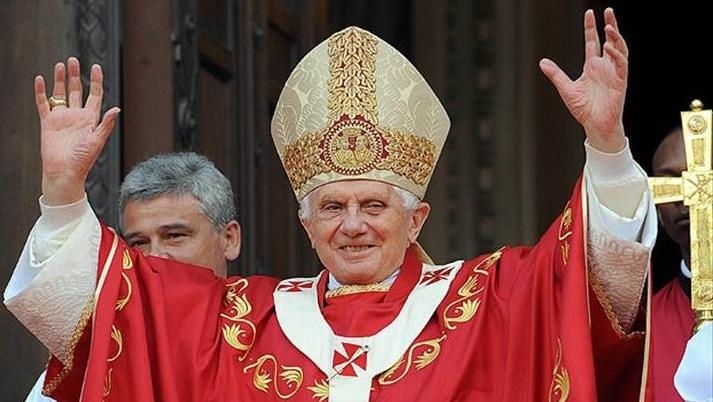

By Anadolu Agency
ANKARA
Pope Benedict XVI was born in the historical town of Marktl am Inn in Bavaria, on April 16, 1927, as the youngest child of Joseph Ratzinger, Sr., a police officer, and Maria Ratzinger, a cook.
Though Benedict, who was a child of a devoted Catholic family with an original name Joseph Alois Ratzinger, entered a minor seminary in the town of Traunstein in southeastern Bavaria in 1939, he was drafted into the Hitler Youth, the youth organization of the ruling Nazi Party in Germany, in 1941.
In 1943, along with the rest of his seminary class, he was drafted into the air-defense corps. He was then transferred to an army unit in Hungary in 1945 only to the deserted in April of the same year. Upon occupation of his hometown by the US Army, he was captured and incarcerated briefly in a prisoner-of-war camp.
Following his release, Benedict was back to his education in the seminary. From 1946 to 1951, he studied philosophy and theology at the Higher School of Philosophy and Theology of Freising and the University of Munich.
Consequently, he was ordained as a priest in June 1951 and awarded a doctoral degree in theology at the University of Munich in 1953 with a dissertation titled “People and House of God in St. Augustine’s Doctrine of the Church.”
After earning his teaching license in 1957, Benedict started to teach dogmatic and fundamental theology at the Higher School of Philosophy and Theology in Freising, Bavaria.
Before moving to the University of Regensburg in 1969, where he later became the vice president, he taught at the University of Bonn from 1959 to 1963, at the University of Munster from 1963 to 1966, and at the University of Tubingen from 1966-1969.
During his long and successful academic career, he wrote several significant theological works, which attracted the attention of senior Catholic clergy in Germany.
Archbishop of Munich and Freising
Consequently, he made a notable contribution to the Second Vatican Council from 1962 to 1965, during which he opposed those who hoped to limit reform, as a theological advisor of Archbishop of Cologne Cardinal Josef Frings.
In March 1977, Benedict was appointed archbishop of Munich and Freising by Paul VI, who bestowed the cardinal’s hat on him three months later.
In November 1981, he was made prefect of the Congregation for the Doctrine of the Faith by his friend Pope John Paul II, whom he had known well since 1977.
As the prefect of the Congregation for the Doctrine of the Faith, the Vatican office responsible for preserving Catholic doctrine and evaluating according to canon law the warrant for disciplinary action against clergy, he earned a reputation as a hard-liner.
He was elected the 265th pope on April 19, 2005, at age 78, the oldest elected pope since Clement XII, pope from 1730-1740.
Benedict immediately took steps to continue Pope Paul’s dialogue with Judaism and Islam and with other Christian churches. Furthermore, he declared that one of the goals of his papacy would be to revitalize the Catholic church in Europe.
In 2010, allegations of sexual and physical abuse by parish priests and in parochial schools – particularly in Germany, Ireland, and the US – brought Benedict and his role in the cases in Germany in particular under close media scrutiny.
Resignation
In a pastoral letter, Benedict rebuked the bishops of the Irish church for a failure of leadership. The Vatican also denounced as “false and calumnious” the charge that as prefect of the Congregation for the Doctrine of the Faith Benedict had been responsible for a policy of covering up cases of sexual abuse, saying that his handling of the cases showed “wisdom and firmness.”
In February 2013, Benedict announced that he would resign at the end of the month, citing his old age and health concerns.
His final public address in St. Peter’s Square drew a crowd of more than 50,000. On Feb. 28 he formally resigned, taking the title of pope emeritus.
The former leader of the Catholic Church died at his Vatican residence on Dec. 31 at age 95.
We use cookies on our website to give you a better experience, improve performance, and for analytics. For more information, please see our Cookie Policy By clicking “Accept” you agree to our use of cookies.
Read More